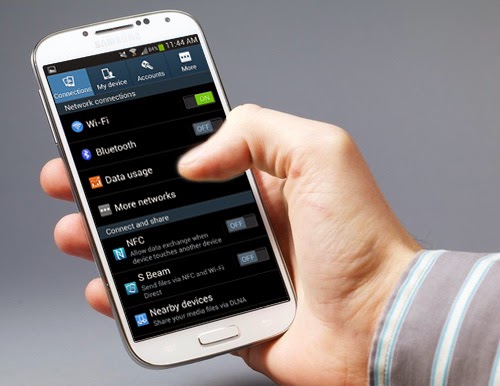Batteries are growing bigger with every passing year, but we're not
seeing a huge benefit because our Android devices are demanding more and
more out of them. Battery life still tops the complaint charts for
smartphone owners tired of the daily charging routine.
The first Android smartphone, the HTC Dream, had a 1,150mAh battery, but it also had a 3.2-inch display.
The Samsung Galaxy S5 has a 2,800mAh battery and a 5.1-inch display.
Average battery capacities have been climbing steadily since 2008, but
screen sizes have been keeping pace.
No one really wants to be told that the most obvious route to increased
battery life is to use your phone less or worse: turn off some of the
features that enticed you to buy it in the first place. So we've pulled
together a list of relatively painless tips to keep your Android going
that little bit longer.
1. Use power saving mode
Most Android device manufacturers have added some form of power-saving
mode. You can automatically hobble your phone's features or shut down
specific apps when your battery dwindles below a predetermined level.
Stock Android only offers battery stats for now, but Android
Lollipop has a battery saver option built in (which means most phones
running Android 5 will too in the future). If you can't find a power
saving option, check out an app like Juice Defender.
2. Automate your phone
You don't need your phone syncing away through the night, so why not
introduce a bedtime routine that automatically silences it and kills
your data and Wi-Fi connections? With apps
like AutomateIt and Tasker you can also automatically turn things on and
off based on triggers and rules you define.
3. Uninstall or disable apps
Delve into Settings > Apps and flick over to the 'All' tab to find a
complete list of your apps. Anything there that you don't use is a
candidate for the uninstall pile. In their infinite wisdom, carriers and
manufacturers sometimes block you from uninstalling their apps, but you
usually have the option to disable them instead and it's worth doing.
4. Hibernate or freeze apps
You may also consider installing Greenify to get a good look at what is
running and automatically hibernate apps that you aren't using, so they
aren't eating system resources unless you start them up.
You'll need to root your device to really take full advantage, which is
simple enough but will take a little time to manage if you're new to the
process. If you do decide to root then you may also consider Titanium
Backup Pro for freezing unwanted apps.
5. Streamline your home screen
The busier your home screen, the more battery life it's going to suck.
Get rid of widgets that you don't need, and consider reducing refresh
rates. Animation costs power, so ditch the live wallpapers.
If you have a phone with an AMOLED display (such as nearly all of the
high end Samsungs or the new Moto X), then use a dark background for the
home screen and a dark theme in general. The technology achieves deep
blacks by not lighting up those pixels and so dark backgrounds can save
you some power.
6. Tweak display settings
Your screen brightness is going to have a big impact on your battery.
Don't rely on auto-brightness because it will generally be set higher
than you really need. Reduce brightness manually and keep it as low as
is comfortable. You can always pull down the notification shade and
tweak it quickly via the quick settings when you have to.
You should also reduce the screen time out in display settings under
sleep. The faster your Android device fades to black when not in use,
the more power you'll save.

No comments:
Post a Comment